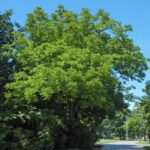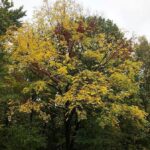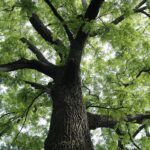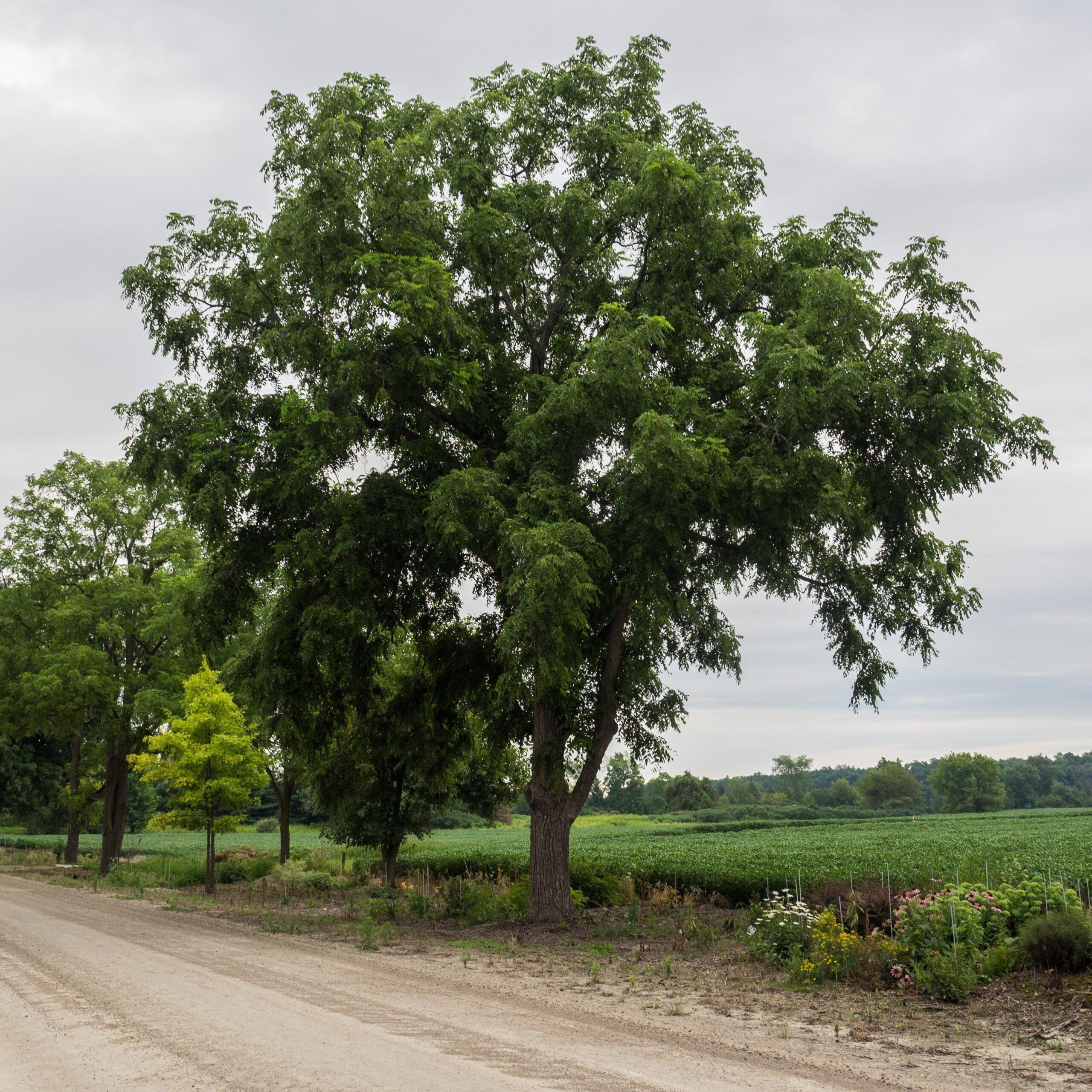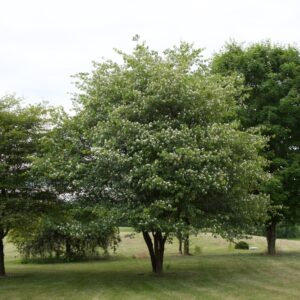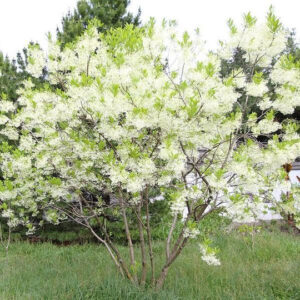Black walnut, scientifically known as Juglans nigra, is a deciduous tree native to North America. Here are some key points about black walnut:
-
Appearance: Black walnut trees can grow up to 100 feet tall and have a broad, spreading crown. The bark is dark and deeply furrowed, while the leaves are compound and composed of 15 to 23 leaflets.
-
Wood: Black walnut wood is highly valued for its beautiful grain and rich, dark color. It is commonly used in furniture making, cabinetry, flooring, and other high-end woodworking projects.
-
Nuts: Black walnuts produce edible nuts that have a strong, distinctive flavor. The nuts are encased in a thick, hard shell that can be challenging to crack. They are often used in baking, cooking, and as a topping for salads and desserts.
|
Type: |
Tree |
|
Origins: |
East and Central NA; GA Native |
|
Height: |
75′ – 100′ |
|
Spread: |
75′ – 100′ |
|
Spacing: |
85′ |
|
USDA Hardiness Zone: |
4 – 9 |
|
Culture: |
Full Sun |
|
Bloom Color: |
Green |
|
Season of Interest: |
Fall |
MAINTENANCE NEEDS: Low maintenance. Difficult to transplant due to deep taproot. Potential diseases include anthracnose, bacterial blight, root rot, canker, leaf spot and shoot dieback. Watch for aphids, fall webworm and a variety of foliage chewing caterpillars. Black Walnut produces chemical near drip line that is toxic to some plants. Husks can stain skin and clothes.
LANDSCAPE USES: Accents or Group Plantings, Borders, Woodland Gardens, Naturalized Areas, and Food Forests.
COMPANION PLANTS: Maple, Cardinal Flower, Fern
IMAGES: Photo by F. D. Richards, Juglans nigra 2015 K4, (2) No machine-readable author provided. JoJan assumed (based on copyright claims)., Juglans nigra11, CC BY-SA 3.0, (3) I, Jean-Pol GRANDMONT, Tournai AR1aJPG, CC BY-SA 3.0, (4) Famartin, 2020-10-12 16 31 56 A Walnut tree turning yellow in autumn along a walking path in the Franklin Glen section of Chantilly, Fairfax County, Virginia, CC BY-SA 4.0
*As plants have ranges in appearance they may not appear as the images shown.


